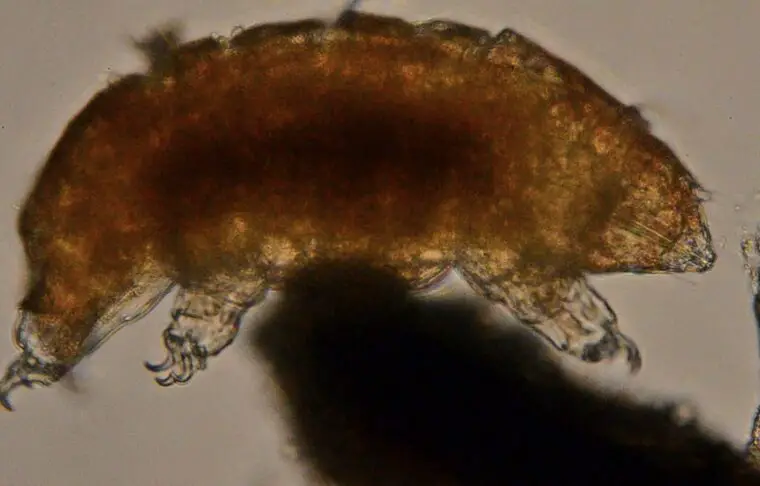Tardigrades, also known as water bears, are some of the most resilient creatures on Earth.
These tiny micro-animals are capable of surviving in extreme environments, including the harsh conditions of outer space.
In this article, we’ll unveil 7 fascinating facts about these incredible creatures and their cosmic adventures.
1. What are tardigrades?
- Size: Tardigrades are microscopic animals, measuring between 0.1 and 1.2 millimeters in length.
- Habitat: They can be found in a variety of environments, including soil, leaf litter, mosses, and aquatic ecosystems.
- Classification: Tardigrades belong to the phylum Tardigrada, which comprises over 1,300 known species.
2. Tardigrades are extremophiles
Extremophiles are organisms that thrive in extreme environments. Tardigrades are well-known for their ability to withstand conditions that would be lethal to most other life forms.
They can survive:
- Extreme temperatures: Tardigrades can tolerate temperatures as low as -328°F (-200°C) and as high as 300°F (150°C).
- High pressure: These creatures can endure pressures up to 6 times greater than those found in the deepest part of the ocean.
- Radiation: Tardigrades can withstand doses of radiation that are thousands of times higher than the lethal dose for humans.
3. Tardigrades’ survival secret: Cryptobiosis

The secret to tardigrades’ remarkable resilience lies in their ability to enter a state called cryptobiosis. In this state, tardigrades:
- Dehydrate their bodies: Tardigrades lose up to 97% of their body water, effectively turning themselves into a desiccated husk.
- Reduce their metabolism: Their metabolic activity drops to less than 0.01% of normal levels, helping them conserve energy and resources.
- Form a protective sugar coating: Tardigrades synthesize a sugar called trehalose, which forms a protective glass-like coating around their cells.
4. Tardigrades in space
In 2007, tardigrades became the first animals to survive exposure to outer space. During the European Space Agency’s FOTON-M3 mission, they were:
- Exposed to the vacuum of space: Tardigrades were placed outside the spacecraft and exposed to the vacuum of space for 10 days.
- Subjected to solar radiation: The water bears experienced the full spectrum of solar radiation without any protection.
- Revived upon return to Earth: Upon their return, the tardigrades were rehydrated and many of them resumed normal activity.
5. The implications of tardigrades in space
The survival of tardigrades in outer space has several implications for science:
Astrobiology: The ability of tardigrades to survive in space suggests that other extremophiles
could potentially exist on other planets or celestial bodies, raising questions about the possible existence of extraterrestrial life.
- Biological resilience: Understanding the mechanisms that allow tardigrades to survive extreme conditions could help us develop new technologies or strategies for protecting human cells and tissues in harsh environments.
- Space travel: Studying tardigrades could provide insights into how to improve the safety and effectiveness of long-duration space missions for human astronauts.
6. Tardigrades on the Moon

In 2019, tardigrades made headlines when they accidentally crash-landed on the Moon.
The Israeli lunar lander, Beresheet, was carrying a payload of dehydrated tardigrades as part of a project to create a lunar library.
Although the lander failed to touch down gently, it is believed that the tardigrades could potentially survive on the lunar surface for years.
7. The ethical considerations of tardigrades in space
The presence of tardigrades on the Moon has sparked a debate about the ethical implications of introducing Earth’s organisms to other celestial bodies.
Some argue that it is essential to protect extraterrestrial environments from contamination, while others believe that the potential benefits of exploring these environments outweigh the risks.
As we continue to venture into space, it will be crucial to address these ethical questions and develop responsible guidelines for future space missions.
Conclusion
Tardigrades are fascinating creatures that have captured the attention of scientists and space enthusiasts alike.
Their remarkable resilience and ability to survive in the harsh conditions of outer space provide valuable insights into the potential for life beyond Earth and the challenges that humans may face as we continue to explore the cosmos.
As we learn more about these incredible micro-animals, we can only imagine what other secrets they might reveal about the universe and our place in it.
FAQ
Q: What are tardigrades?
A: Tardigrades, also known as water bears, are microscopic animals found in various environments on Earth.
They are known for their ability to survive extreme conditions, including the vacuum and radiation of outer space.
Q: How do tardigrades survive extreme conditions?
A: Tardigrades enter a state called cryptobiosis, in which they dehydrate their bodies, reduce their metabolism, and form a protective sugar coating around their cells.
This enables them to withstand extreme temperatures, pressures, and radiation levels.
Q: Have tardigrades been to space?
A: Yes, tardigrades have been sent to space on multiple occasions.
In 2007, they became the first animals to survive exposure to outer space during a European Space Agency mission.
In 2019, they were unintentionally introduced to the Moon when an Israeli lunar lander crashed with a payload of dehydrated tardigrades.
Q: Why is it important to study tardigrades in space?
A: Studying tardigrades in space can provide insights into the potential for extraterrestrial life, the mechanisms of biological resilience, and strategies for improving the safety and effectiveness of human space travel.

I am a fun fact enthusiast and creator of Facts On Tap.
I love to share my knowledge and curiosity with readers and inspire them to learn something new every day.
When I’m not writing, I enjoy traveling, reading, and playing trivia games with my friends.




